All about the repair and restoration of pans

The frying pan is an irreplaceable part of kitchen utensils. These devices are great for helping people with cooking for many years, but these dishes can sometimes become unusable.

That is why it is important to know how to revive the pan in order to continue using it comfortably.
Restoration
Most of the damaged utensils can be repaired by hand.
Before starting any action, it is better to open as many windows as possible and even turn on the hood, if there is one: the bulk of the operations will have to be carried out over an open fire, heating the pan.
Turn on a high heat on the stove and place your soiled container on it.
To clean off anything that has ever burnt on it, use regular kitchen salt.
It needs such an amount that it completely covers all areas with old fat., pieces of burnt food.
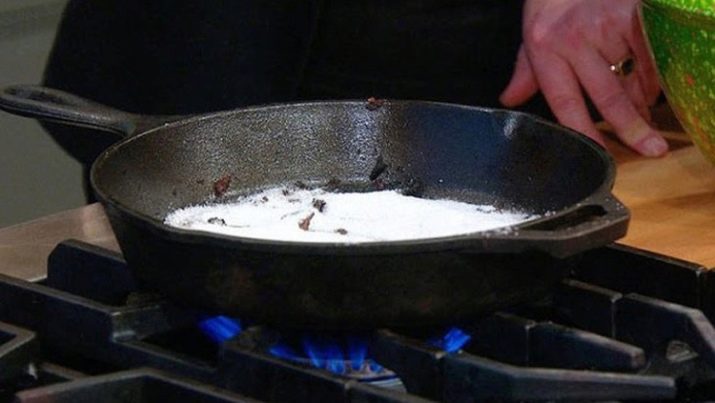
Distribute this amount evenly. After that, you will have to heat the pan for an hour and stir the salt in it from time to time. The indicator in this case is the shade of salt.
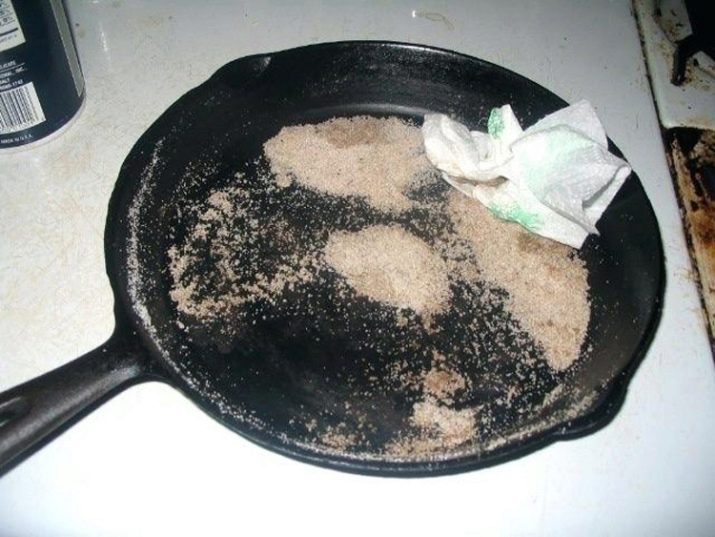
Carbon deposits formed on the walls of the dishes during use will gradually mix with the salt., and the latter will get darker and darker. This means that the process is going well.
Additional cleaning
Of course, salt alone will not be enough in this case.
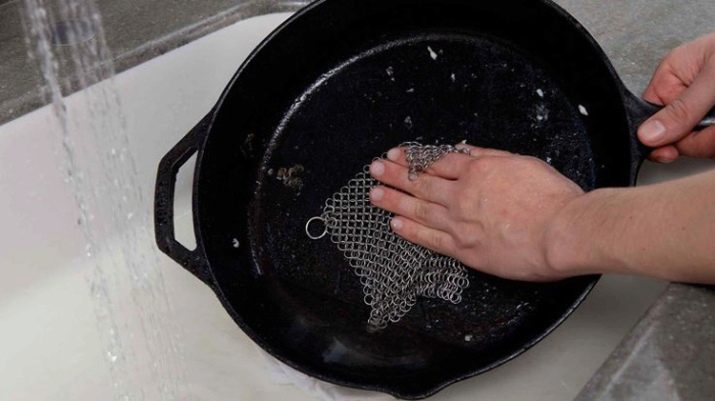
Immediately after you have warmed up a dirty container for an hour, pour out all the used salt from it., rinse the surface of the pan with tap water and wipe dry.
The next cleaning aid will be regular vegetable oil.
You need to pour a lot of it, and it is better to pour it immediately into a heated utensil.
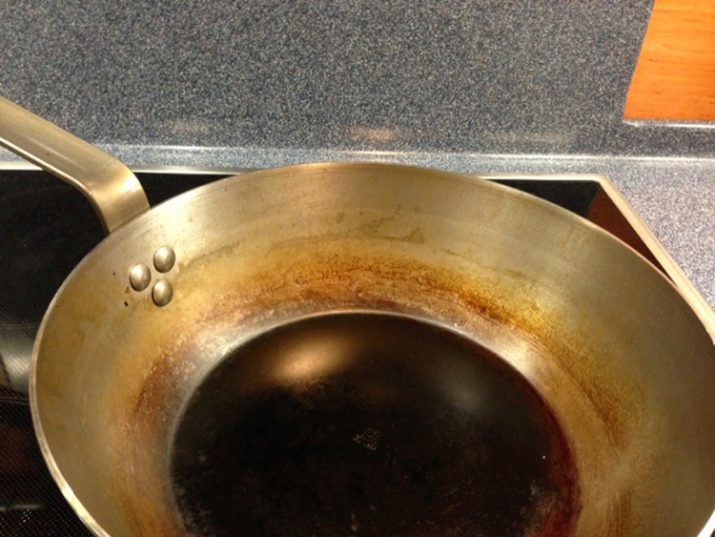
In this case, too much fire here will be more harmful than useful: then you will have to clean the entire kitchen from scattered splashes of boiling oil within a radius of 2 meters.
Let the skillet heat up over low heat for 40 minutes.
When all the oil has completely boiled, you just need to pour it out, and let the pan cool. It is not recommended to pour water into it immediately to avoid splashing and hot steam. To complete the difficult cleansing process, you just need to boil water in a pan several times.

The more procedures you carry out, the cleaner the walls will be. When finished, cool the pan and simply wipe it off with a dry towel.
Restoration of non-stick coating
The non-stick coating can be restored even if it has deteriorated or, due to high temperatures, swelled and began to burst.

However, it should be understood that the process will be different for each type of pan. Before doing it, you need to pay attention to the material from which your dishes are made.
Cast-iron pan
The cast iron skillet must first be cleaned with salt and oil. When you complete the cleaning procedure and wipe the cooled container with a dry rag, you need to grease the surface with oil again.
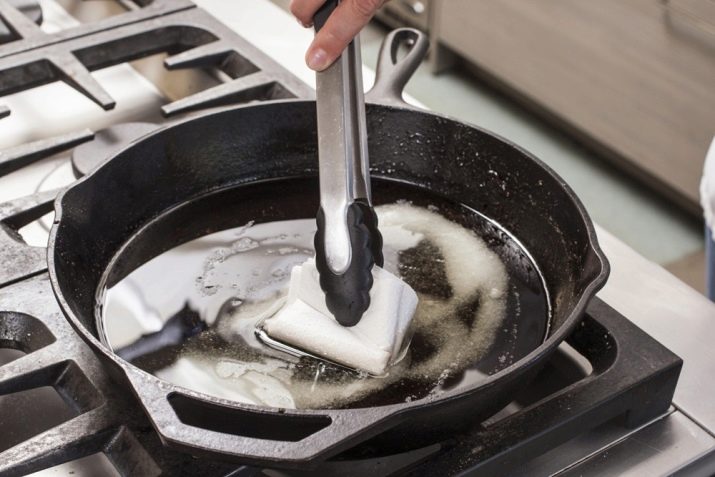
But this time, you apply a thin layer of oil to the clean walls.
For this purpose, a special brush is perfect, which helps to carefully spread a small amount of oil over the entire surface of the pan.
After you apply it, place the container in the oven.
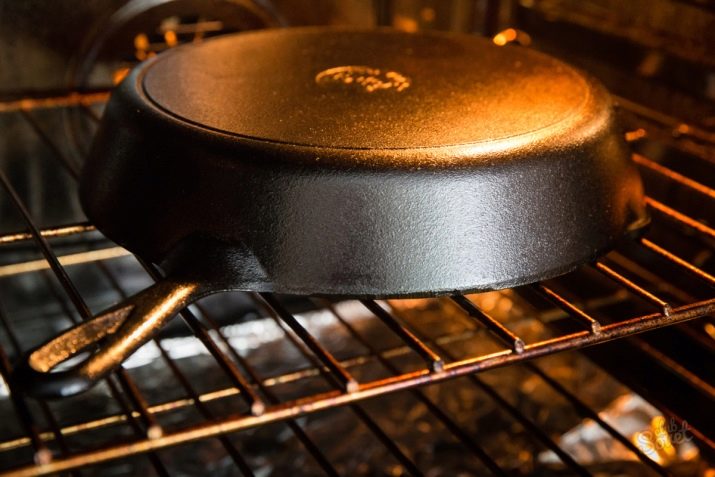
The oven should be preheated to 170 ° and the greased dishes should be left there for about an hour.
Other types of materials
This method applies to stainless steel or aluminum products.
They also need to be cleaned using the salt fire method.
In this case the recovery method will be slightly different, because you will need to use iodized salt... You will need a layer of at least 1 cm, and you need to pour the product onto a frying pan already pre-heated over a fire.
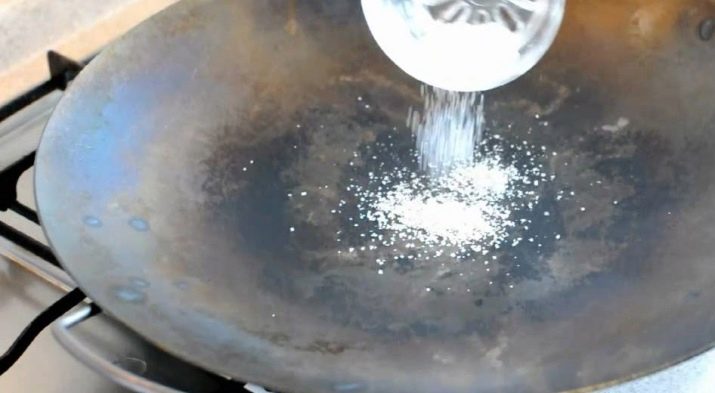
After warming up for half an hour, the salt will cleanse everything that has accumulated on the non-stick coating, and after that the food will burn less. However, this method cannot be used for enamelled dishes.
Teflon
Here, the point is not in restoration, but in preservation of the applied protective layer.
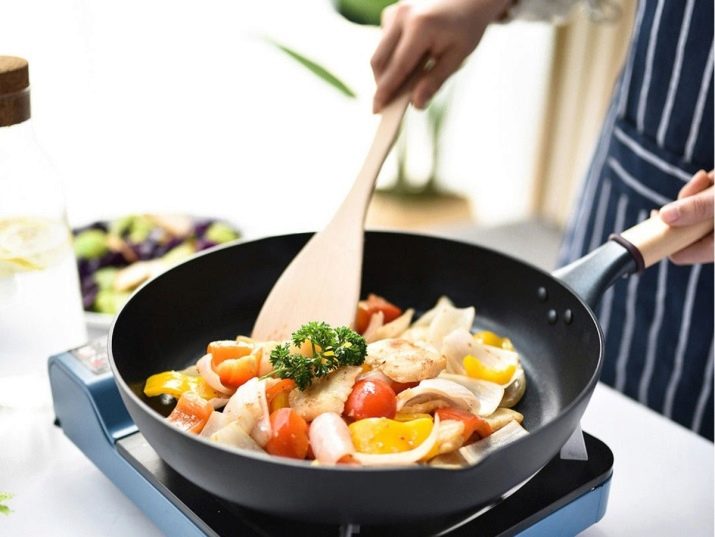
And if you want to ensure a longer life for the existing coating, then boil water in a pan for no more than 10 minutes, pour it out and lubricate the coating with a thin layer of oil.
Is the damage dangerous?
The myth that a spoiled Teflon coating, when ingested, can cause digestive upset and even disease, is quite common today. However, this has no scientific basis, given that this coating is made from a mixture of carbon and fluorine.
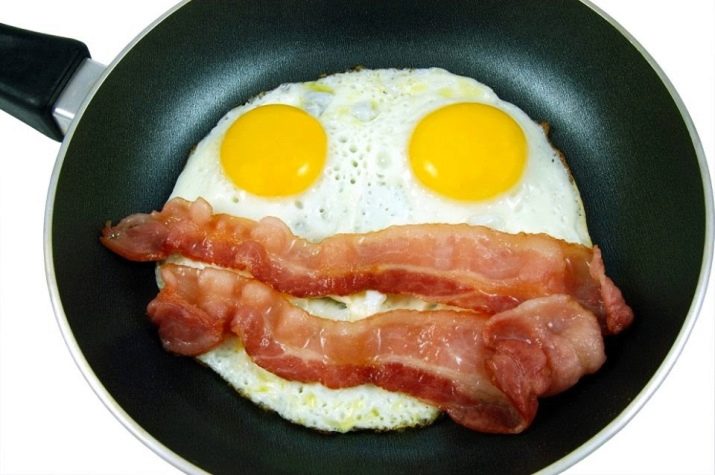
It not only perfectly helps food not to burn, but it does not bind at all with any chemical elements in everyday life, and even more so it does not react with food or water.
Teflon coating is resistant to heat and harmless to the human body.
And even if the particles that break off the frying pan get into the food, nothing bad will happen. They are not digested, but simply pass through the digestive tract and out. However, such coverage cannot be repaired or restored.
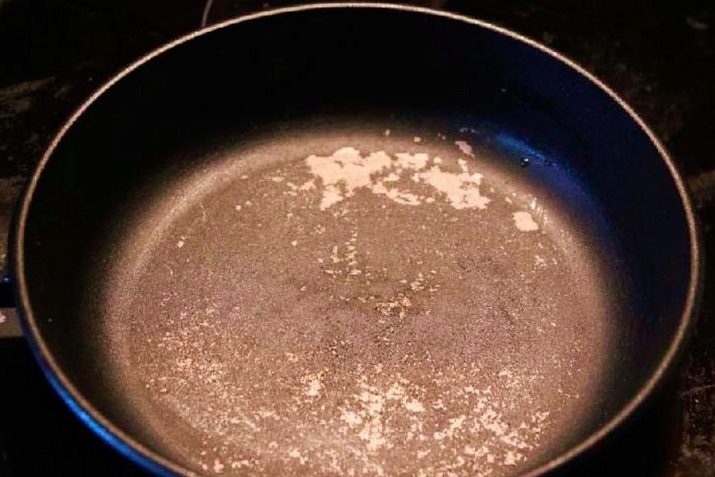
But heating a frying pan over 230 ° is really unsafe.but not because of Teflon, but because of the oil that releases carcinogenic substances.
How to avoid spoilage?
To keep the Teflon intact and in good condition, wash it with a sponge, not an iron brush.
When cooking in a skillet, a silicone or wooden spatula is the best solution to stir the food to avoid scratching the surface.
But if you are still worried about the possibility of Teflon getting into the body, then there are options for your choice with a ceramic or titanium coating.
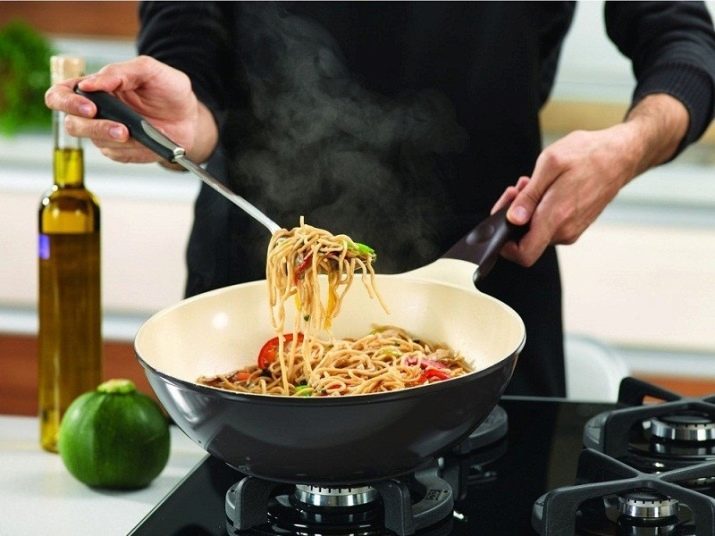
Of course, such a pleasure will cost a little more, but it will not enter the body at all, since it does not separate in pieces even if damaged.
You can learn about another way to clean the frying pan from soot and fat from the video.








